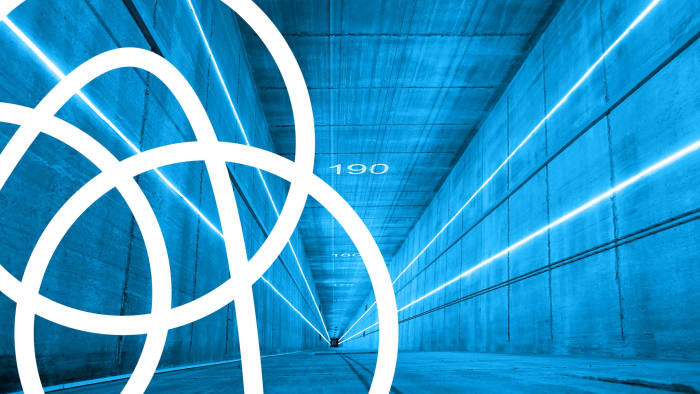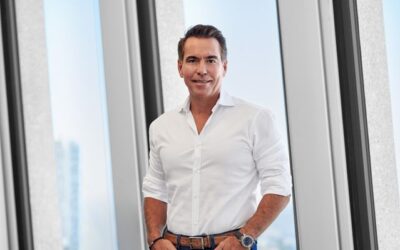Buyout groups compete with Finland’s Kone for one of the world’s biggest elevator makers
What the lifts business lacks in stardust, it makes up for in size.
And for lawyers, private equity executives and bankers, the industry will prove far from humdrum in the next few months as the future of one of the handful of heavyweight global manufacturers is decided.
German conglomerate Thyssenkrupp is preparing to sell or float its lifts business, a crown jewel for the company, but one that it urgently needs to offload as its other divisions flounder. Thyssenkrupp has yet to decide on a sale or an initial public offering of the business, but bidders are already circling.
The world’s largest buyout firms are among them, including Blackstone, Carlyle and Cinven. A sale could set a record for European private equity deal, potentially worth as much as $20bn, said people familiar with the matter.
Such an outcome would symbolise a shift in power from Europe’s once-mighty industrial conglomerates to some of capitalism’s more recent winners: the buyout groups that are sitting on record piles of cash and able to snap up bigger companies than ever before.
Initial bids filed in November covered both a full sale or just a minority stake, said people familiar with the matter. The bids revealed “great interest,” a company spokesman said, with Thyssenkrupp expected to decide this quarter on whether to pursue an IPO, a full sale or to simply dispose of a stake.
For private equity groups, capturing the business, which employs more than 50,000 people and generated €8bn in sales last year, would be a huge coup. Its major draw is the reliable, recurring revenue — 50 per cent of the total — that comes from clients paying for lifts to be serviced once they have been installed.
“It’s the razor blade business model,” a senior dealmaker at one of the private equity bidders said, referring to a textbook strategy in which companies sell a staple product such as a razor handle cheaply in order to lock consumers into buying expensive replacement parts — in this case, the blades — for years. You might even lose money on some new installations, another senior dealmaker said.
Blackstone is bidding in a consortium with Carlyle and the Canada Pension Plan Investment Board. The group will pitch their ability to help develop a successful German company that can potentially be listed in about five to seven years’ time, according to people familiar with its thinking.
A rival trio of Advent, Cinven and the Abu Dhabi Investment Authority, will stress its good relationships with unions and its large teams “on the ground in Germany” to support the company, people close to the group said. Brookfield Asset Management, the Canadian asset manager and one of the world’s largest real estate investors, is also interested.
3G Capital, which alongside Warren Buffett’s Berkshire Hathaway owns Kraft Heinz, is likely to emphasise its status as a longer-term investor than its private equity rivals, said people familiar with the group.
The companies declined to comment.
Buyout executives will seek to try to present themselves as the most responsible owners of the business. It is a claim that has come under fire from Kone, the Finnish lift manufacturer that has expressed interest in the business.
“For them [private equity groups] it’s probably just another deal,” Henrik Ehrnrooth, Kone’s chief executive, said in an interview at a London event late last year to mark the launch of a new, “digitally connected” model that works with Amazon’s Alexa service so that users can summon a lift before they leave their apartment.
“For us it’s something we’ve been considering for about twenty years, and we are a family-owned company with very long roots so we think about the generations ahead,” he added.
Infamously likened to a “plague of locusts” by a senior German politician in 2005, private equity executives are confident that the level of domestic hostility towards the industry has subsided as buyout firms have raised record sums for deals in Europe.
Indeed, some buyout groups are instead set to instead portray Kone as the real job-destroyer, arguing it may have to break up the company to overcome competition concerns and cut roles to eliminate overlap between its business and Thyssenkrupp’s.
Germany’s powerful union, IG Metall, has demanded that there be no operational redundancies as a result of any sale. Its position matters because workers are represented on the supervisory boards of German companies by law.
While Mr Ehrnrooth acknowledged some jobs may be eliminated, he said that in the longer term “the combination will make us a stronger company and therefore create more opportunities”.
If Kone does triumph, it is expected to face potentially lengthy scrutiny from competition regulators, too, because a combination would create an industry giant. Thyssenkrupp is already scarred from such battles, after the EU’s competition watchdog last year blocked a proposed merger with Tata Steel.
A tie-up of Kone and Thyssenkrupp’s lifts business — an idea that has been around since Thyssen and Krupp merged in 1999 — is “inherently do-able,” Mr Ehrnrooth insists. The Kone chief executive said a partnership with private equity group CVC in which it would sell overlapping assets to the buyout firm would be “an option, but that’s if you want to do things much faster,” he said, and he would “have to see” which route the company will take. CVC declined to comment.
What is clear, is that in devising how best to woo Thyssenkrupp, hopeful buyers will have to navigate what one person working on a bid described as a “complex web of stakeholders” including the steel-to-submarines conglomerate’s managers, shareholders and powerful employee representatives.
Neither that challenge, nor the risk that an economic downturn hits the construction industry, appears to be cooling a contest that is expected to intensify this month.
That is when it will reach what one person close to the process described as “the killing ground of who’s really going to put the money up.
Source: Financial Times
Can’t stop reading? Read more
US private equity exits gain momentum for a second year as firms race to offload ageing assets
US private equity exits gain momentum for a second year as firms race to offload ageing assets US...
Thoma Bravo leads new growth chapter for Azul with majority acquisition
Thoma Bravo leads new growth chapter for Azul with majority acquisition Thoma Bravo has closed its...
Blackstone weighs renewed sale of Canary Wharf’s Cargo building as market outlook improves
Blackstone weighs renewed sale of Canary Wharf’s Cargo building as market outlook improves...




